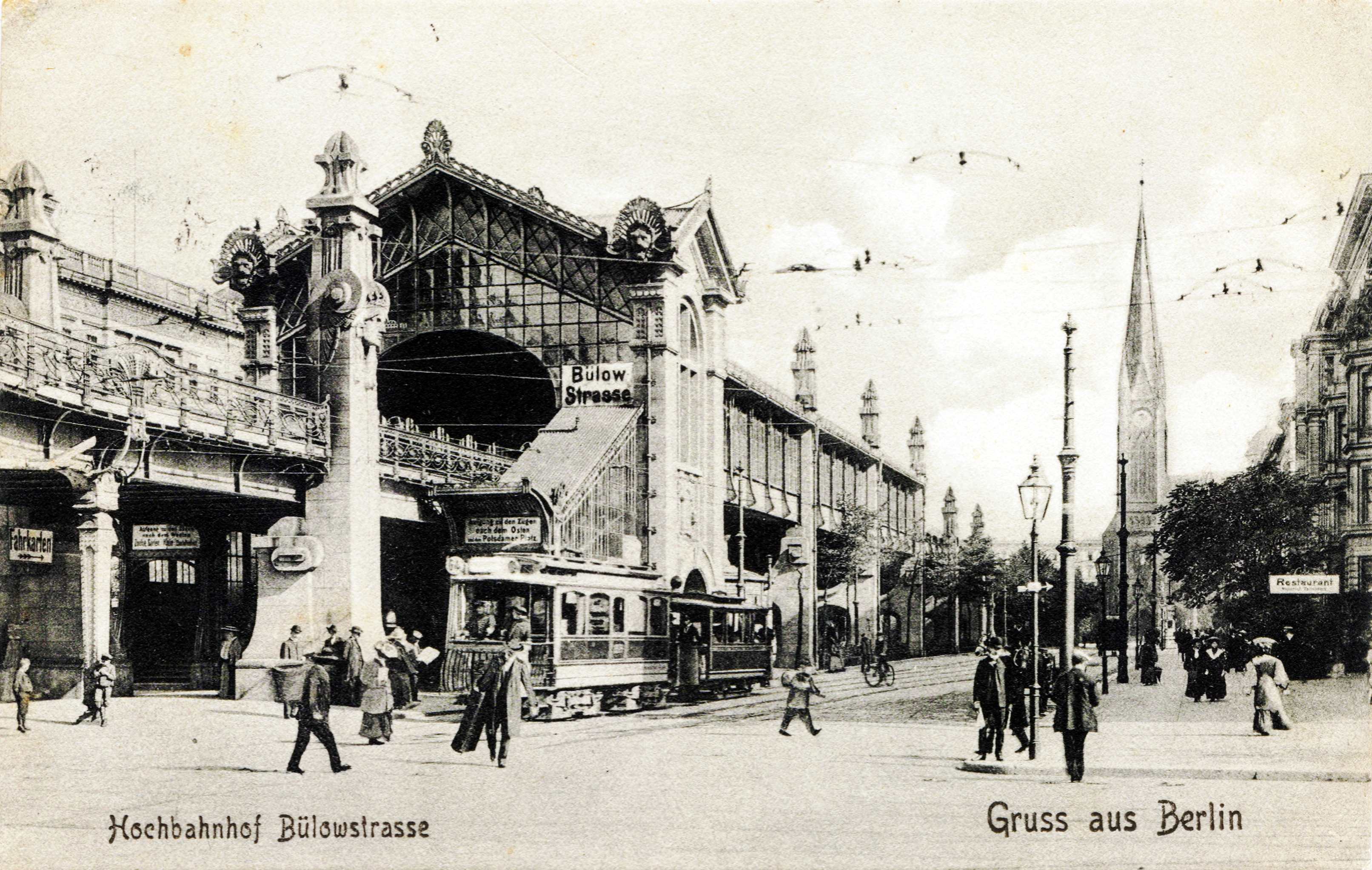|
Bülowstraße (Berlin U-Bahn)
Bülowstraße is a Berlin U-Bahn station on line U2, located in the Schöneberg district. It opened in 1902 on the western branch of the ''Stammstrecke'', Berlin's first U-Bahn line. Like the eponymous street, the station is named after the Prussian general Friedrich Wilhelm Freiherr von Bülow. The station features in the 2011 film ''Unknown'', starring Liam Neeson. History Architect Bruno Möhring planned it in an Art Nouveau style, and his son Rudolf enlarged the hall in 1929. Heavily damaged by air raids and the Battle of Berlin on 22/23 November 1943 and 19 July 1944, the station was rebuilt after World War II, but went out of service in 1972 due to the interruption of the U2 line by the construction of the Berlin Wall. The building then hosted a bazaar A bazaar or souk is a marketplace consisting of multiple small Market stall, stalls or shops, especially in the Middle East, the Balkans, Central Asia, North Africa and South Asia. They are traditionally located ... [...More Info...] [...Related Items...] OR: [Wikipedia] [Google] [Baidu] |
Schöneberg
Schöneberg () is a locality of Berlin, Germany. Until Berlin's 2001 administrative reform it was a separate borough including the locality of Friedenau. Together with the former borough of Tempelhof it is now part of the new borough of Tempelhof-Schöneberg. History The village was first documented in a 1264 deed issued by Margrave Otto III of Brandenburg. In 1751, Bohemian weavers founded Neu-Schöneberg also known as Böhmisch-Schöneberg along northern Hauptstraße. During the Seven Years' War on 7 October 1760 Schöneberg and its village church were completely destroyed by a fire due to the joint attack on Berlin by Habsburg and Russian troops. Both Alt-Schöneberg and Neu-Schöneberg were in an area developed in the course of industrialisation and incorporated in a street network laid out in the Hobrecht-Plan in an area that came to be known architecturally as the Wilhelmine Ring. The two villages were not combined as one entity until 1874 and received town p ... [...More Info...] [...Related Items...] OR: [Wikipedia] [Google] [Baidu] |
Bruno Möhring
Bruno Möhring (11 December 1863 – 25/26 March 1929) was a German architect, urban planner, designer and a professor in Berlin. He was one of the most important architects of the Jugendstil style in Germany. He received his education at the Technische Hochschule in Technische Universität Berlin, Charlottenburg. Early life Möhring was born on 11 December 1863, at Königsberg (East Prussia) to Karl Theodor Möhring and Maria Dorothea Kretschmann Möhring (Kretschmann). His father was an accountant and attorney. After completing the gymnasium (Germany), gymnasium in Königsberg, Möhring spent a year training as an apprentice to a builder. He then studied architecture at the Technische Universität Berlin, Königlich Technische Hochschule in Charlottenburg. His tutors at the institute were Hermann Ende, Carl Schäfer, Johannes Otzen and Johann Eduard Jacobsthal (well known as the architect of major bridges). As part of his training in architecture, Möhring toured Italy and plac ... [...More Info...] [...Related Items...] OR: [Wikipedia] [Google] [Baidu] |

